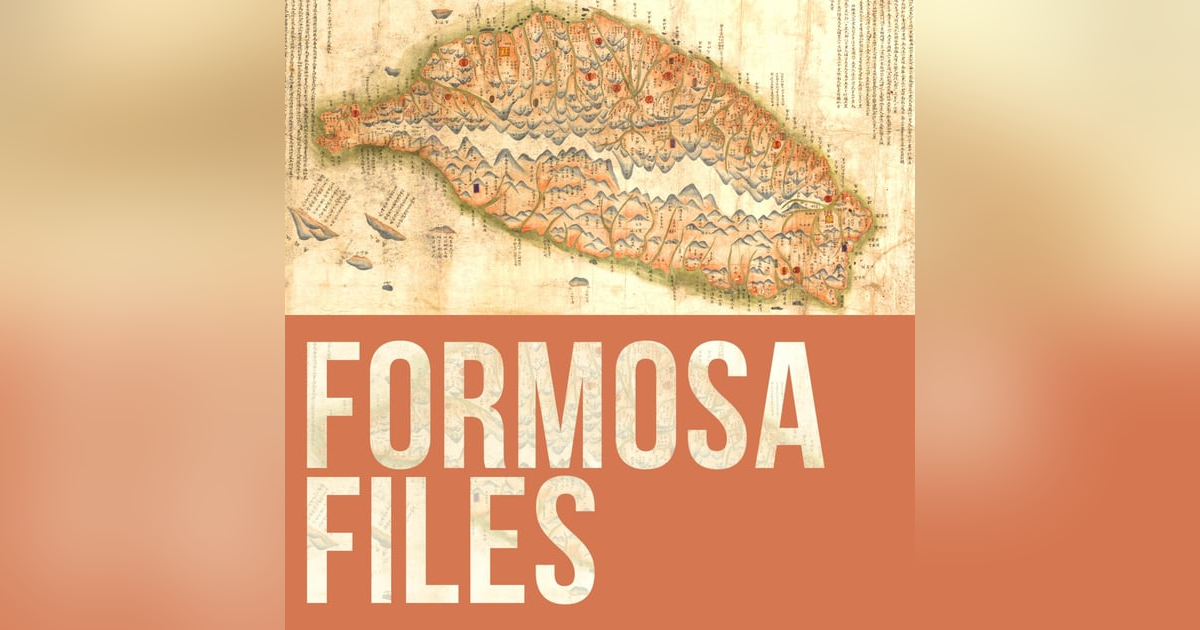S4-E30 - The “First” Chinese Person to Visit Taiwan - Chen Di 陳第 (1603)

400 Years: Dutch Formosa - part one:
Of course, Chen Di was not actually the first person from China to visit Taiwan. What makes him special is that he wrote an account of what he saw here in 1603, and that account is the earliest surviving manuscript discovered thus far.
Chen Di's short travel commentary focuses mostly on the Indigenous Peoples of Taiwan; their customs, diet, etc., a rare and valuable documentation by a man who was both a scholar and a warrior. Chen Di's account of his 1603 trip was only rediscovered in 1955!
Interestingly, the same year Chen Di came to Taiwan was when the Dutch East India Company (the VOC) set up a permanent trading post in what's now Indonesia. The Dutch are determined to break into the China trade market - but they'll need another base. Somewhere a bit closer.
Cover left: A statue of Chinese philologist Chen Di 陳第 in Lianjiang County, Fuzhou, Fujian, China. Right: Modern-day Siraya people performing a ceremony. The Siraya tribe are part of what used to be called "Pingpu Aboriginals," and they comprise four subtribes. Photo and following text via Discover Siraya: "The early Pingpu tribes lived simply, with their society being matriarchal and agricultural. The Siraya tribe was one of the most broadly distributed and influential tribes, with early scholars defining the Siraya tribal area as stretching from the modern-day Tainan Plains down to the Hengchun Peninsula, with their roots in Tainan. When the Dutch first arrived in Taiwan, they called the local Aboriginals in Tainan the Sideia, the Dutch approximation of the Taiwanese term for the four subtribes as a group. Later, this evolved into the current spelling, Siraya. Some, however, maintain that the word 'siraya' in fact means 'person.'"
Below: The rather odd-looking Buddha's hand fruit. Chen Di's report includes notes on the foods eaten by Indigenous People. He writes, "Their fruits include coconuts, persimmons, Buddha’s hand citrus, and sugarcane," Wikipedia notes: "The different cultivars and variations of this citron ("citron" derives ultimately from Latin, citrus, which is also the origin of the genus name) variety form a gradient from "open-hand" types with outward-splayed segments to "closed-hand" types, in which the fingers are kept together. There are also half-fingered fruits, in which the basal side is united and the apical side fingered. The origin of this kind of citron is commonly traced back to South or East Asian ... where most domesticated citrus fruits originate."
INFO on the Plains Indigenous peoples.
Below: A drawing of the Formosan clouded leopard by Joseph Wolf - Proceedings of the Zoological Society of London 1862. Wiki says, "An interview survey conducted in 1986 among 70 indigenous Taiwanese hunters revealed that they sighted a Formosan clouded leopard in the Tawu Mountain area in 1983 for the last time. In 1989, the skin of a young individual was found in the Taroko National Park area, which is the last confirmed record." The only non-indigenous person to ever witness the big cat was Japanese anthropologist Torii Ryūzō in 1900. There have been reports of sightings of the Formosan clouded leopard as recently as 2019 - but most experts believe they are extinct.
Do us a favor and rate/review the show! It really helps. Do it on Apple Podcasts or here on our website.
Write us with questions or ideas at formosafiles@gmail.com
AND THE BIGGEST REQUEST: tell others about this free, not-for-profit resource about Taiwan.












